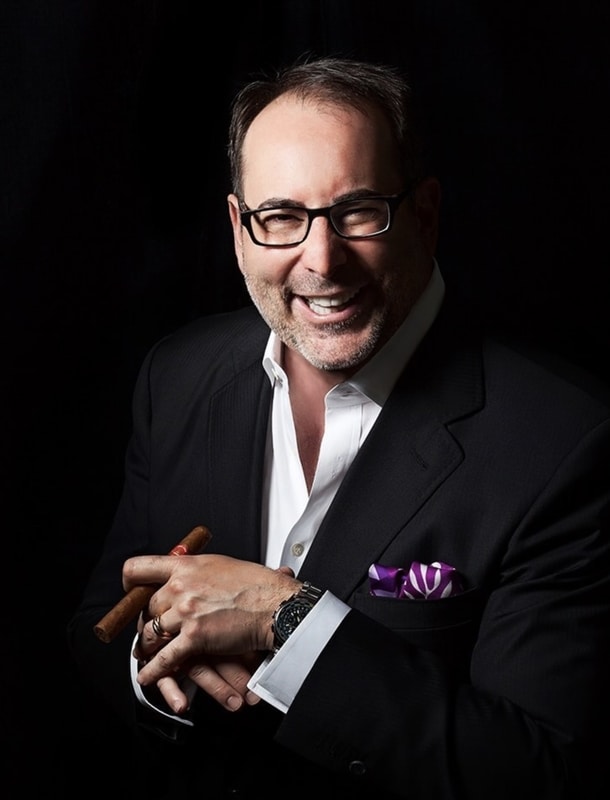AS WITH MOST SUBJECTS of great personal interest, my curiosity about cigars started when I was young. In the 1970s, well before it became a posh backdrop for a variety of farcical reality-TV shows, and home to Justin Bieber and Kanye West, Calabasas, California, was my hometown (home village was more like it). At the time it was semirural—a master-planned utopian pastoral Spanish Colonial construct littered with tennis-set Stepford wives, but in a good way I suppose—and just a stone’s throw from Malibu. Further down the highway in the other direction were Downtown Los Angeles and Hollywood.
I have only the fondest memories of my formative years there—riding horses, swimming, hiking. Saturday drives with my father are what I recall the most. Daddy owned a succession of Jaguars, all V12s save one V6, all either a shade of blue or solid black. Some of our sojourns were merely to drop me off at my maternal grandparents’ bungalow in Studio City, where I spent many weekends. Some, though, were “over the hill” to Alfred Dunhill in Beverly Hills.

(L) Walk-in Humidor at Dunhill Beverly Hills, circa 1951. Back then, Cuban Cigars were widely available in the US. (R) My father’s Jaguar XJ12.
The Wedgwood-blue series II XJ12 would purr as we cruised down the freeway and over Coldwater or Laurel Canyon; on hot days my legs would stick to the leather seats, but neither the glossy walnut trim nor the wool carpet would cede an inch to the heat. Father would turn on the radio (he was an old-school rock guy) and light a cigar. A Montecristo No. 1 or No. 2 if he had recently traveled to Europe, more often a Dunhill Montecruz Seleccion Suprema Sun Grown. That was the post–Cuban Revolution effort of the Menendez family (who owned H. Upmann, then Havana’s largest fabrica, where the Montecristo brand was created and rolled) and was the first cigar to commercially use a sun-grown wrapper. However, Dad wasn’t brand-loyal; anything “good”—I never asked him to clarify—was fine with him.
The humidor manager at Dunhill knew Dad’s name; he used the hasty, all-purpose “young man” when addressing me. There are things I’ll forever remember about that humidor room: the vast array of cigars and gigantic apothecary jars of pipe tobacco, the leather furnishings, the smell (think Tom Ford Tobacco Vanille Eau de Parfum) and the framed black-and-white autographed photos that lined the wooden walls. I had no idea who any of these people were; Dad said (somewhat dismissively) only that they were “old stars.” In time I came to know them as some of Hollywood’s greatest directors, comedians and leading men—Alfred Hitchcock, Orson Welles, Yul Brynner, Groucho Marx, George Burns, Steve McQueen—a true rogues’ gallery of cinematic cigar enthusiasts. And eventually, more so, my personal heroes.

Dunhill of London 136 South Rodeo Drive Beverly Hills 1951. Dunhill would move a block north to 201 N Rodeo Drive 1987 until it closed in the early 2000s.
My own cigar tutelage and indulgences commenced in earnest in my late teens. Like many who start smoking stogies at a younger age, I wished to “look older.” (Now, of course, I hope to look younger, or at least my actual age. Ah, the foibles of youth.) Eventually, my hobby turned into my profession when, to make ends meet while in graduate school, I became one of the managers of the Davidoff of Geneva in Beverly Hills.

(L-R)Amer al-Kubaisi and Aaron Sigmond Davidoff of Geneva Beverly Hills, February 1993.
The Left Coast Davidoff flagship was situated on a tributary of the famed Rodeo Drive—Via Rodeo—a “little street that looks like what Hollywood thinks Avenue Victor Hugo in Paris should look like,” according to David Shaw, the cigar-loving Los Angeles Times Pulitzer Prize–winning writer.

Davidoff of Geneva Beverly Hills Humidor autumn 1992.
It makes sense that David, a departed friend, would emphasize Hollywood. L.A. is an industry town, and as such many of the clients I served at Davidoff were two generations of cigar celebrity removed from those whose framed pictures, across the street at Dunhill, I’d puzzled over as a child. Johnny Depp, Tom Selleck, Pierce Brosnan, Whoopi Goldberg, Joe Pesci, Arnold Schwarzenegger, Gregory Hines, and Sylvester Stallone all came calling at the “DoG House.” Eventually, new signed photos—some of recent stars, some older—lined the walls, capturing Hollywood’s enduring romance with the cigar.
------------------------------------------------------------------------------------------------------------------------------------------------
 About the Author:
About the Author:
AARON SIGMOND is an award-winning publisher, author and creative executive who has traversed the world of cigars both personally and professionally for more than 30 years. He is the founding editor of SMOKE Magazine and The Cigar Report, as well as the author of PLAYBOY: The Book of Cigars and most recently, The Impossible Collection of Cigars.

